Green tea or Lü Cha (绿茶) represents the largest category of Chinese teas – hundreds of varieties, cultivated in 18 provinces. It’s the most loved type of tea in China. Processing features make it full of nutrients. It’s taste is fresh and aroma is pure grass-floral.
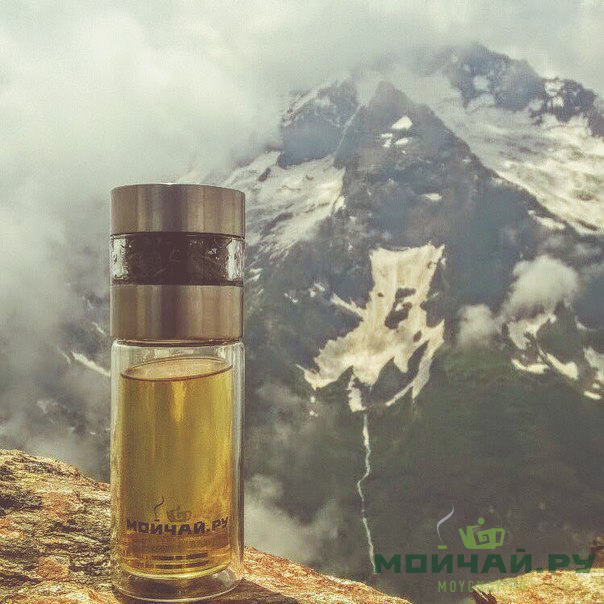
Although the history of tea in China is two thousand years old, the familiar form of fine green tea leaves has appeared just 600 years ago (in the days of the Ming Dynasty, 1368-1644). Previously tea leaves have been pressed into cakes and baked.
Chinese people have always appreciated the health properties of tea drinking. The most ancient way to keep the "breath of life" in the tea leaf assumed it grinding into a homogeneous paste which was formed into a "cakes" or "tiles" and dried in an oven. This method is described in the first investigation dedicated to tea, "Cha Jing" (茶經, "The Book of Tea") which has been published in VIII-th century.
In the tenth century the technology has changed a bit. Tea leaves were no longer crumbled. After steaming tea leaves were rolled (without breaking its original integrity), and then shaped for baking. As time passed they were no longer being baked in the shape. Instead, they were in a loose form just pan-fried in large woks. Finally, around the fifteenth century loose tea finally ousted the pressed.
With the change in manufacturing method the practice of brewed tea, pin-cha (品茶) took over. Along with it appropriate utensils – teapot сha-hoo (茶壶) and small cups cha-bei (茶杯). Up to this point no one has made tea in a teapot. At the dawn of tea history, it used to be prepared in a pot like a soup. The same way it is prepared nowadays by many people of Central Asia to whom it got in those ancient days.
In the Middle Ages tea beverage was prepared by whipping the tea powder into a foam, using a special brush. This tradition has survived to the present time in the Japanese tea ceremony.
Ancient tea was very strong. Today’s higher grade greens are more light and soft – grass-flower, creamy or nutty, or sweet, or seaweed-savory, or crisp, with barely perceptible tartness flavor which transformed into bright finish on your tongue for a few minutes after a sip. They are designed to make you feel fresh – as clear and bright as a spring morning.
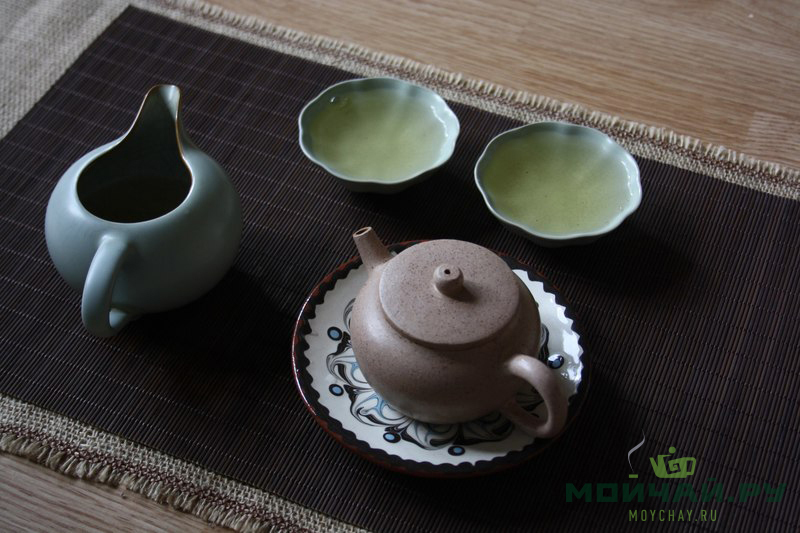
(photo: tea ceremony with "Tai Ping Houkui")
Among the variety of greens stand out several whose history goes back hundreds of years ago. At a different time, they were awarded the right to be called Imperial tea: grow and get processed under the supervision of special officials and get delivered to the court of the Son of Heaven. This is, of course, Xi Hu Long Jing (西湖 龙井, Dragon’s Well of the West Lake), which is made in Zhejiang Province near Hangzhou city. This is Dong Ting Bi Luo Chun (洞庭 碧螺春, Emerald Spirals of Spring) from Jiangsu, the other eastern province of China. These are Lu An Gua Pian (六安 瓜片, Pumpkin Seeds from Lu An) and Huang Shan Mao Feng (黄山 毛峰, Fleecy peaks of the Yellow Mountains), the pride of growers from Anhui Province. There is the classic Henan Xin Yang Mao Jian (信阳 毛尖, Fleecy Blades from Xin Yang) and the old Sichuan Meng Ding Gan Lu (蒙 顶 甘露, Sweet Dew of Mengding Mountain) and some others.
All these varieties have an internal quality classification. First of all, the best tea is distinguished by the authentic growing place of tea bushes. Secondly, it must be the first spring harvest. And finally the processing of the raw material must be done with the utmost care.
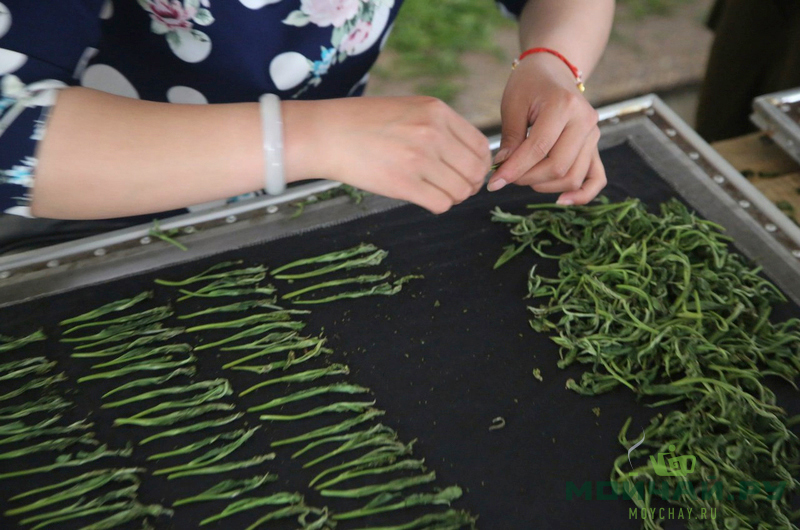
(photo: green tea "Tai Ping Houkui" processing)
Famous variety which made in its historical homeland in early spring is the most expensive tea. Its price is disproportionately high. For example, the best "Long Jing" is "Shi", or "the Lion's" (collected near Lion's Peak in the village of Long Jing), "Long", or "the Dragon’s" (collected near Weng Jia Shan, the Elder’s Mountain), also the "Yun", or "Cloudy" (collected near Yunqi and Mei Jia Wu) and "Hu", or "the Tiger’s" (collected near Hupao springs and in Si Yan Jing). Chinese worship such authentic well-known varieties so due to the limited growing area demand is always higher than the offer.
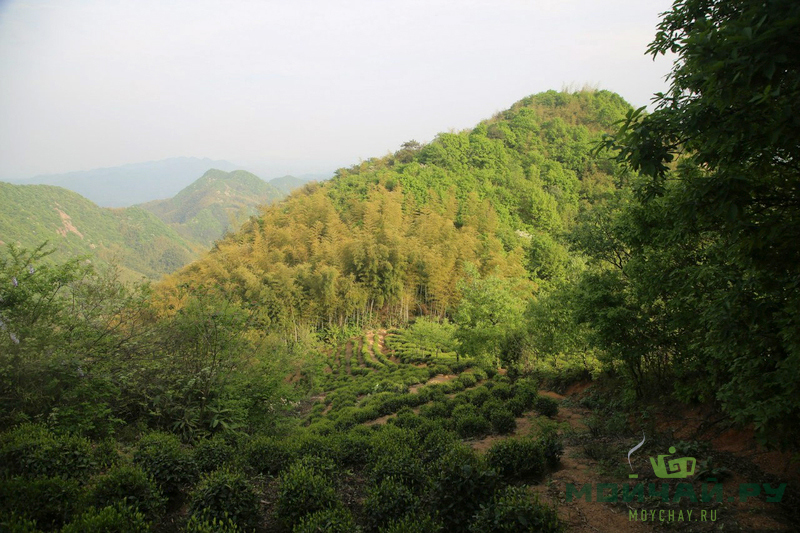
(photo: tea garden in Zhejiang province)
Tea from plantation located in close proximity to the "historic homeland" is valued highly, but is quite affordable. Obviously, popular varieties are not made exclusively in the historical villages, but also in the nearby (and sometimes very distant) areas, where the conditions permit growing the original grade of the tea bush and where the leaf can be processed using the same technology. In fact, for a non-expert, it is very difficult to tell the difference between the authentic tea and a good one but made "for a thousand miles". Forgery of the famous brands is a widespread phenomenon and is “as old as the hills”.
Excluding the well-known historical varieties, there is a large category of teas called "E Sheng Cha" (野生茶) or "Wild Tea”. In many regions, where the history of tea cultivation goes back hundreds of years, in the quiet of the mountain forest wild or feral tea bushes grow. They are watched by the local farmers who make a simple rustic tea. If you ask the name of the tea, peasants would proudly explain to the foreigner that this is "The Green Tea”! It might be quite different in quality, either more subtle and gentle or simple and blunt, but it is always full of life, bright taste and aroma. In our shop, you can always find a few varieties of "E Sheng" from different tea regions of China: Sichuan "E Sheng Mao Feng" and "E Sheng Lü Cha", "Taiping E Sheng Cha" from Huangshan mountains, "E Sheng from Luan", and others.
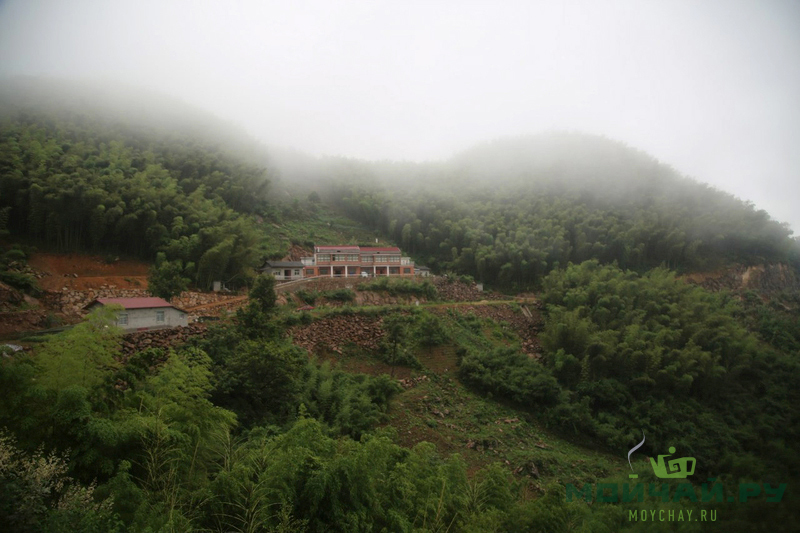
(photo: tea farm in Luan County, Anhui province)
An early harvest directly affects the quality of greens: the very first buds that have just started growing after careful processing turn into the tastiest and healthiest tea. And the most expensive. Tea growers have a saying "Early tea remains a treasure for three days – wait too much and you only get grass".
The traditional Chinese agricultural calendar has 24 seasons a year with 15 days each. There are three seasons for collecting the best tea (depending on the region): Chun Fen (Spring Equinox, 20th March – 4th April), Qing Ming (Purity and Clarity, 4th April – 20th April) and Gu Yu (Grain Rain, 20th April – 5th May). The best tea, called ”Before the Clear” is collected before the Purity and Clarity festival, Qing Ming (the 4th April).
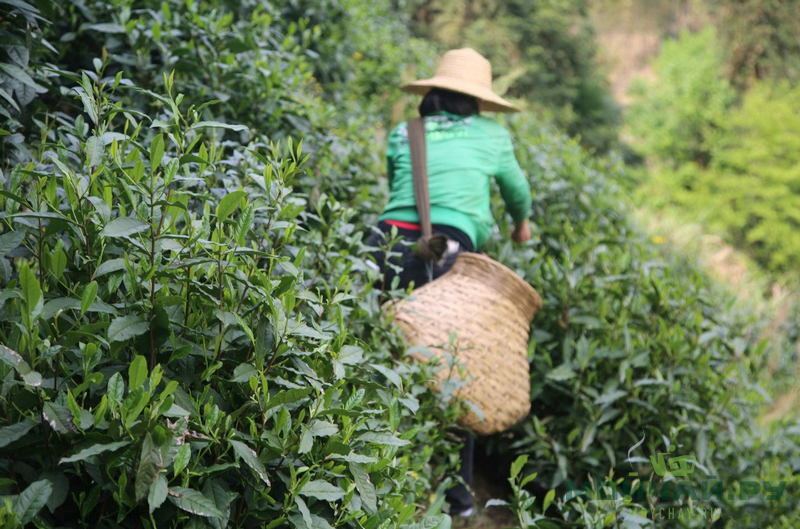
(photo: tea harvesting)
As to raw materials – tight buds are called Cha Ya (茶芽, Tea Bud), or sometimes poetically Mao Feng (毛峰, Fluffy Peak) or Lian Xin (莲心, Heart of Lotus). Western tea traders call these buds "Tips". Bud and a single leaf together (Bud break) are called Qi Qiang (旗枪, Lance with a Banner). A bud and two leaves at an early development (in this case the leaves are hugging the bud) are called Que She (雀舌, Sparrow Tongue). In English, all these types are called "tea flush". Normally, one kilogram of premium tea contains 60-80 thousands buds.
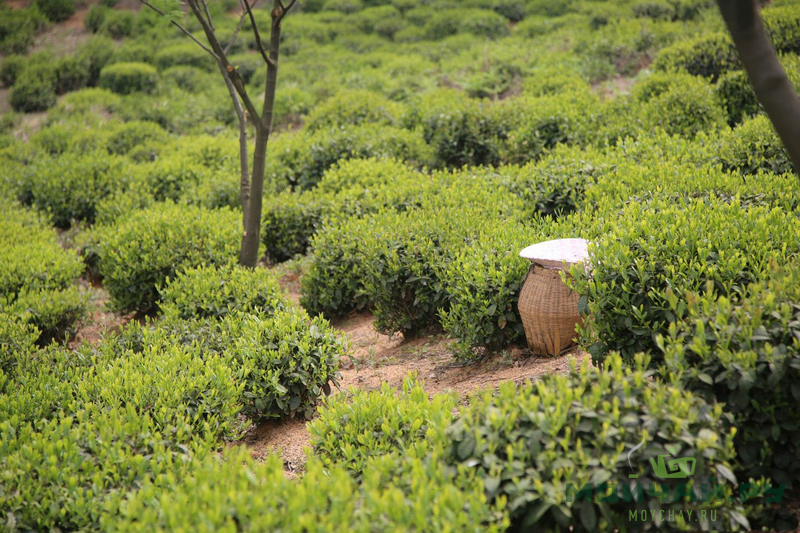
(photo: tea garden in Anji County, Zhejiang province)
Processing of this valuable material requires the master to have a skillful technique and an absolutely masterly control of the hand while he roasting the tea leaves in a steel pan. For example, the highest-grade Long Jing is obtained as a result of the "10 manual manipulations": shaking (抖, Dou), taking on (搭, Da), tacking (带, Dai), pinning down (挤, Ji), throwing (甩, Shuai), grasping (抓, Zhua), pushing (推, tui), pinching (扣, Kou), pressing (压, Ya) and polishing (磨, Mo). Experienced tea masters know well how and when to use the certain actions according to the temperature, color and moisture content of tea leaves. A novice takes 3 years to master that and they roast no more than 1 kilogram a day. Premium Long Jing tastes at once rich and refreshing, and it's a fine introduction to the wide world of Chinese green tea.
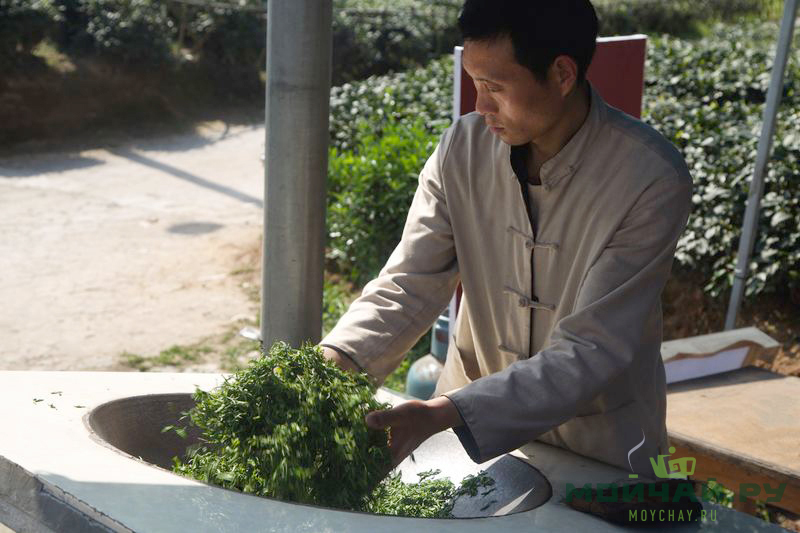
(photo: "Longjing" manufacturing)
The technological nuances of the processes used for different varieties of green tea determine the final appearance and quality of the product, but do not go beyond the following fundamental stages: Wei Diao (萎凋, Initial Drying), Sha Qing (杀青, Stop Oxidation), Rou Nian (揉捻, Twisting-Rolling) and Gan Zao (干燥, Drying). The entire process, from the collection of tea buds to packaging of the finished tea in sealed bags, does not take more than one day.
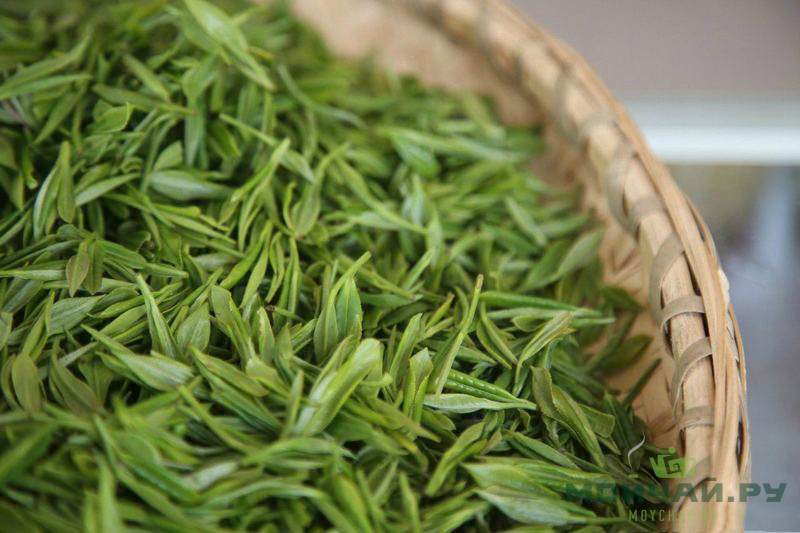
(photo: tea buds, ready for initial drying step)
Wei Diao (萎凋, Initial Drying). Tea buds collected in the early morning are delivered in large wicker baskets to a local tea factory, where they are thinly spread (3-5 cm) on bamboo sieves for 3-5 hours, stirred from time to time. During this time, the leaf loses its moisture and elasticity. This makes it easier to mould it into the desired shape without crushing its integrity. It is very important not to overdry the leaf because the loss of moisture starts fermentation, which is not welcome in the green tea.
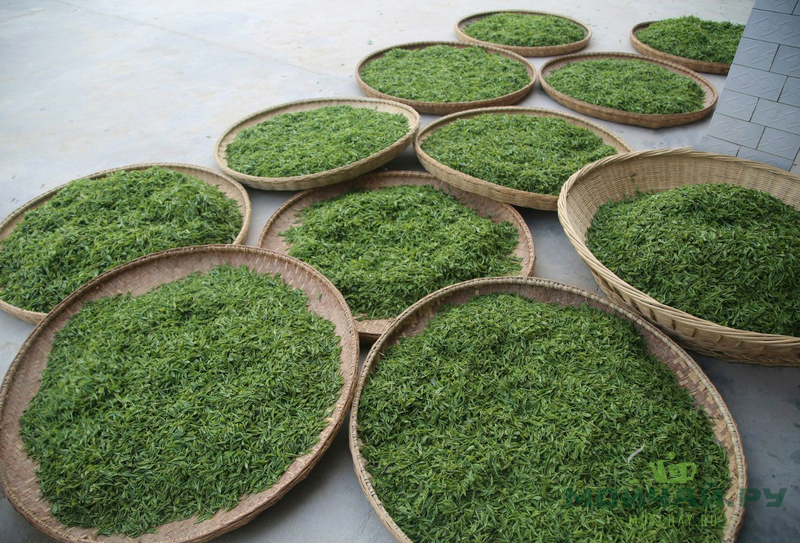
(photo: initial drying step)
Sha Qing (杀青, Stop Oxidation). literally translated from the Chinese “Sha Qing” means “Kill Green”. Despite the scary name, this step involves a high temperature (160-200°C) fast (3-5 minutes) processing of the tea leaf. Strictly speaking, the “green” is exactly what is left in the leaf, as evident from the colour of the finished tea, while the proteins denature, stopping the metabolic processes. The vitamins, tea catechins, and other beneficial substances are thus "preserved" until the leaf comes into contact with boiling water. Nowadays, there are three ways of Sha Qing:
Zheng Qi (蒸汽, Steaming). This is the oldest method in which leaves in a basket with perforated bottom are placed over boiling water for 30-60 seconds. This allows to stop the fermentation and lock down the flavours and aromas of the tea leaf with a relatively low temperature (95-100°C).
Chao (炒, Frying) in the Go (锅, Pan), which can be flat or concave. First, the pan is heated on high heat, then the temperature goes down from 250°C to 180°C and a small portion (250-1000 grams) of fresh tea leaves is added. The leaf is roasted for 5-10 minutes with constant stirring.
Hong (烘, Warming) in a spinning (28-32 rpm) hot drum, the diameter of which is 50-80 cm. The leaves stay in the drum for 2 to 3 minutes, but continuous loading allows to process 150-200 kg of tea leaf per hour.
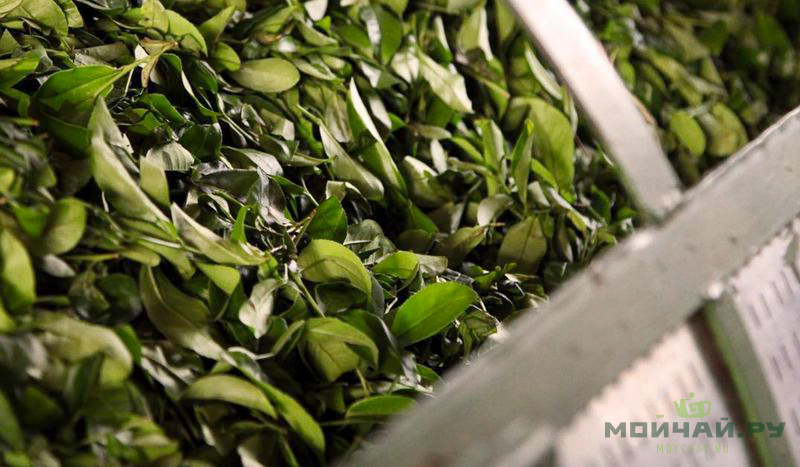
(photo: tea leaves in a spinning drum, sha qing hong step)
Rou Nian (揉捻, Twisting-Rolling). At this stage, the leaf acquires its final shape. Green tea can have one of the following shapes: twisted, spiral, flat, blade, needle, sparrow tongue, bound and loose-leaf. With manual processing, the hot tea leaf keeps being heated in the pan, but the temperature is gradually decreased to 70°C and below. Tea master keeps shaking, pressing or crumpling it, depending on the desired shape. His effort must be precisely calibrated: too weak and the tea does not get moulded, too strong and the leaf gives juice and burns, tea leaves stick to the pan, break down and the fluff crumbles down. This operation is supposed to take 10-15 minutes. Rolling can be done by a machine, but the Premium Green is made only by hand. Nevertheless, even when using a machine, the master controls the process: if the leaf is tender, the lid is closed gently, while if it is rough, the pressure of the lid is first increased and then released at the very last moment.
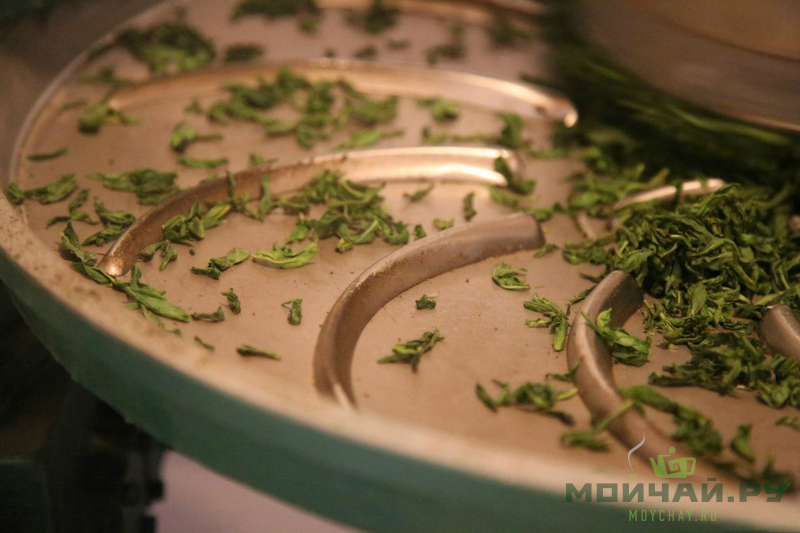
(photo: tea leaves in a roller, rou-nian step)
Gan Zao (干燥, Drying). The final stage removes the remaining moisture and creates the aroma of the tea. Normally, one of two methods is used: the pan drying, "Chao Gan”, 炒干, and the hot-air drying, "Hong Gan", 烘干. The drying equipment can be different as well: a basket over hot coals, a grill, or cabinets with hot air supply.
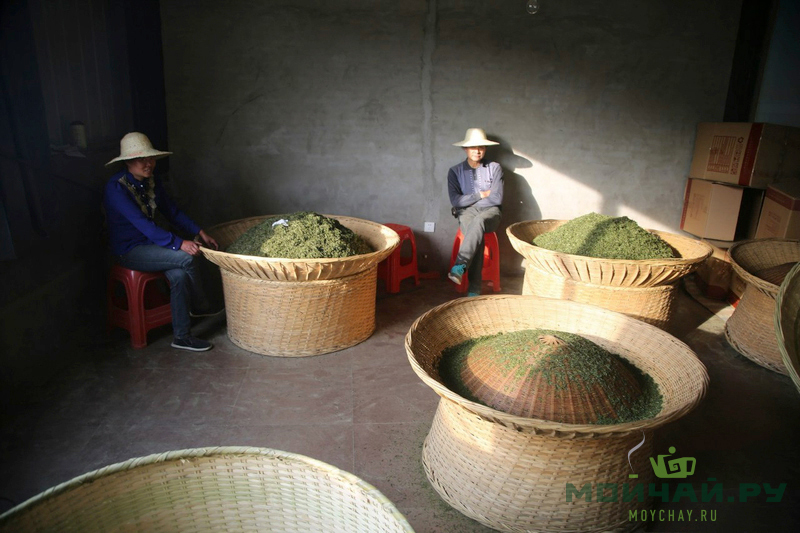
(photo: tea leaves in a baskets over hot coals, gan-zao step)
The finished tea is sorted one more time, damaged leaves and buds are removed. Ready-to-drink tea is packed in big foil bags containing 10-12 kilograms, which are then placed in cardboard boxes. The most valuable tea is packed in fabric or vacuum bags in small portions.
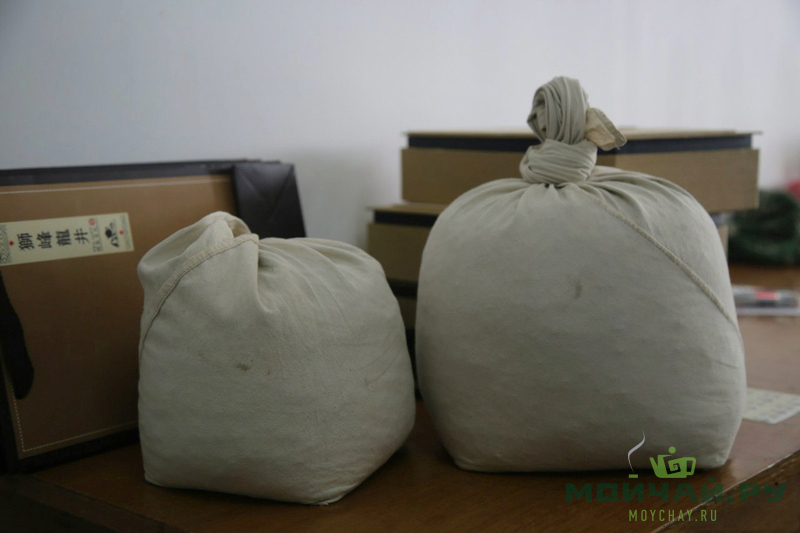
(photo: ready tea, packed in cloth bags)
The Green tea is said to be a medicine for a hundred diseases. It removes toxins, burns fat and provides the body with all the essential vitamins. It prevents cardiovascular diseases, the formation of cancer cells, liver and kidney stones, and also contains fluorides which protect teeth from decay. Tea cools the body, helps to clear up thinking, and the subtle playful aroma instantly increases your mood and refreshes perception.
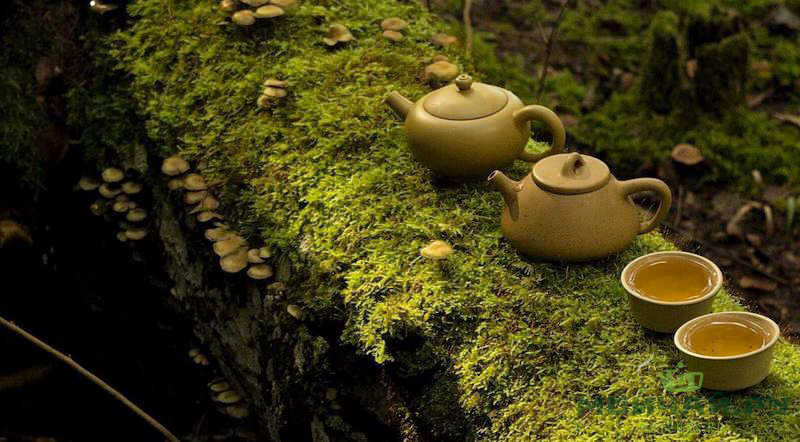
(photo: tea ceremony in the forest)
The taste and bouquet of green tea can be summarized in four words: Lightness, Tenderness, Freshness and Cleanliness. Its numerous varieties differ from each other in hundreds of nuances, each of them having a unique personality that is revealed over and over again during a friendly conversation.
In our store, you can always buy the premium Chinese green tea, handmade on small farms located in the historical places. In the end of the XX-th century, all of them received the official statuses of National and Global Nature Reserves.